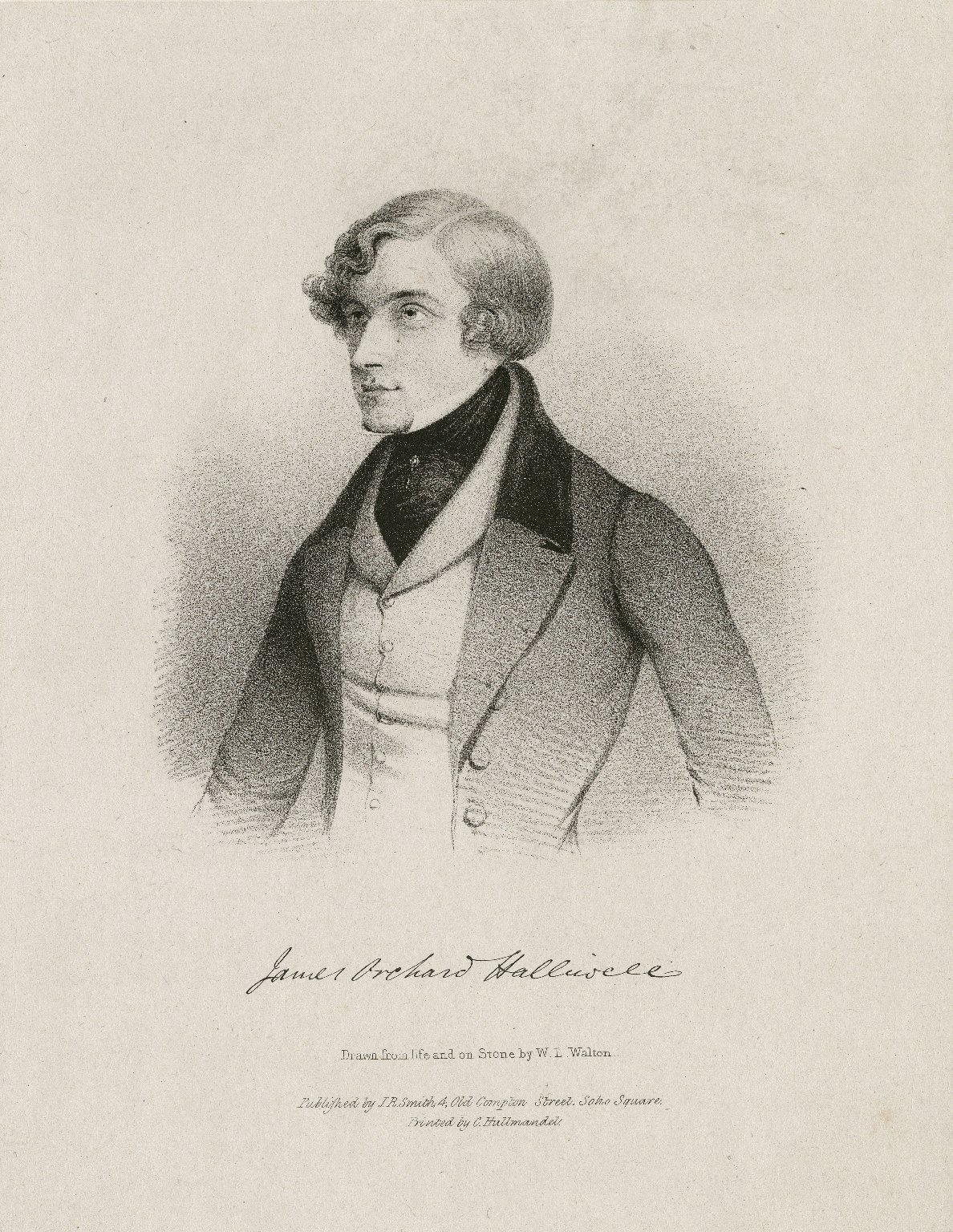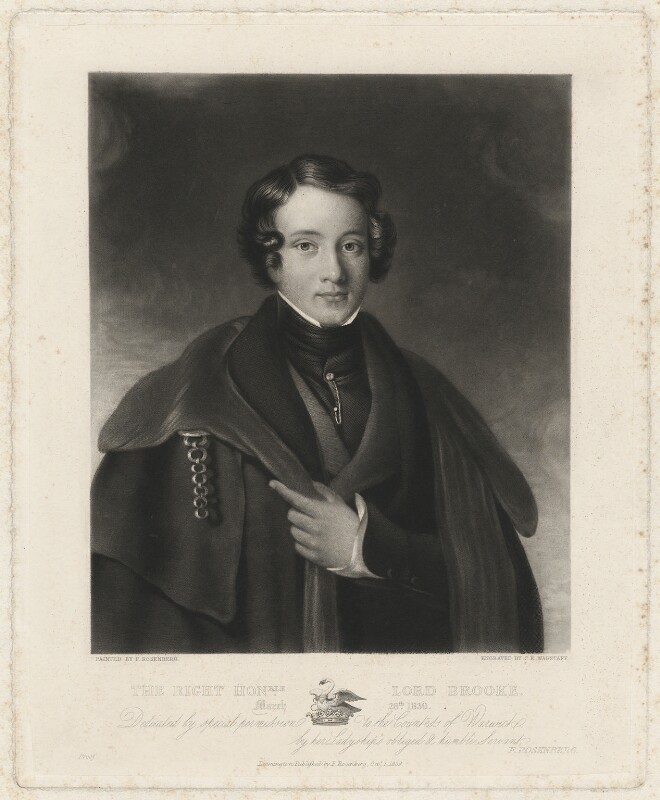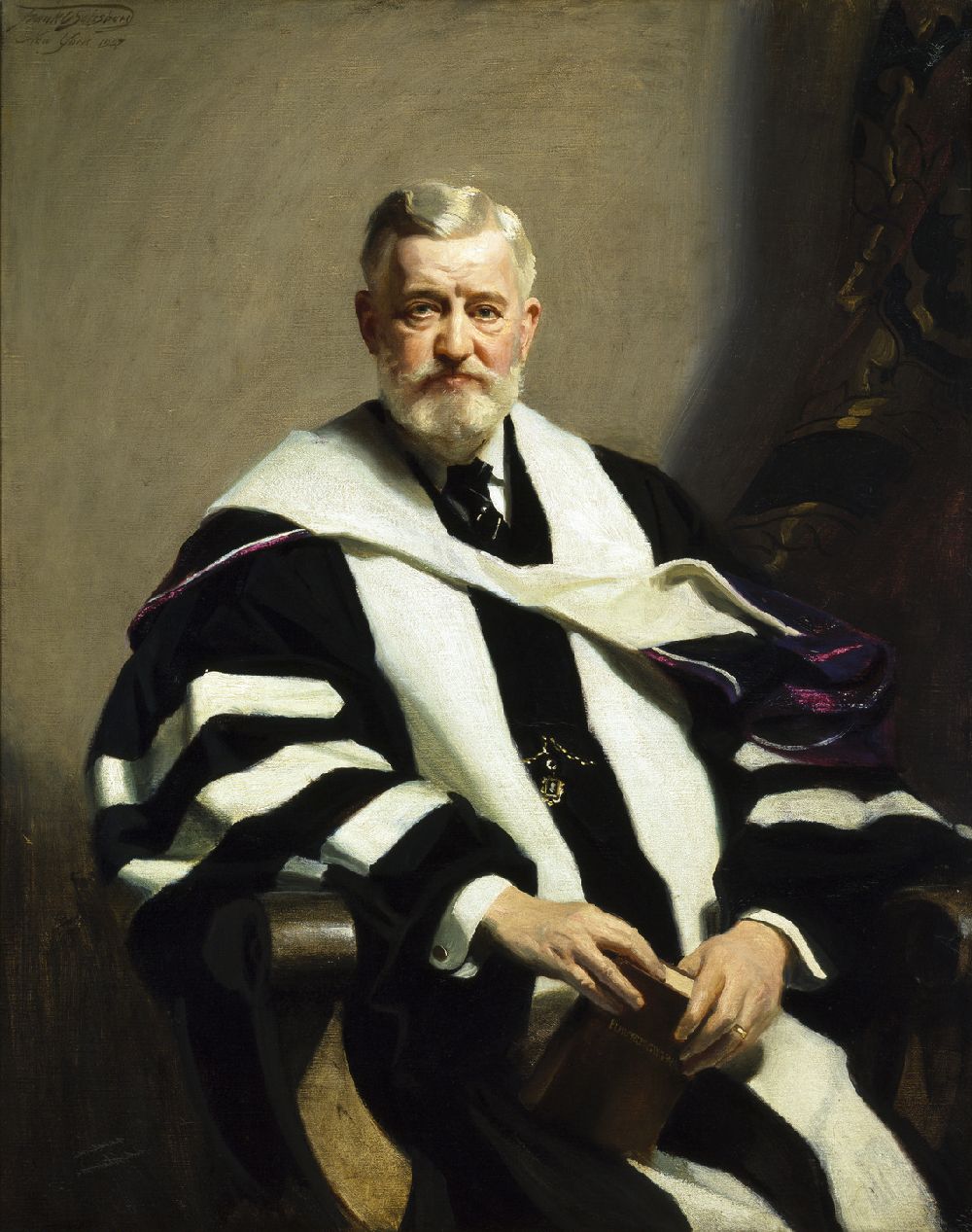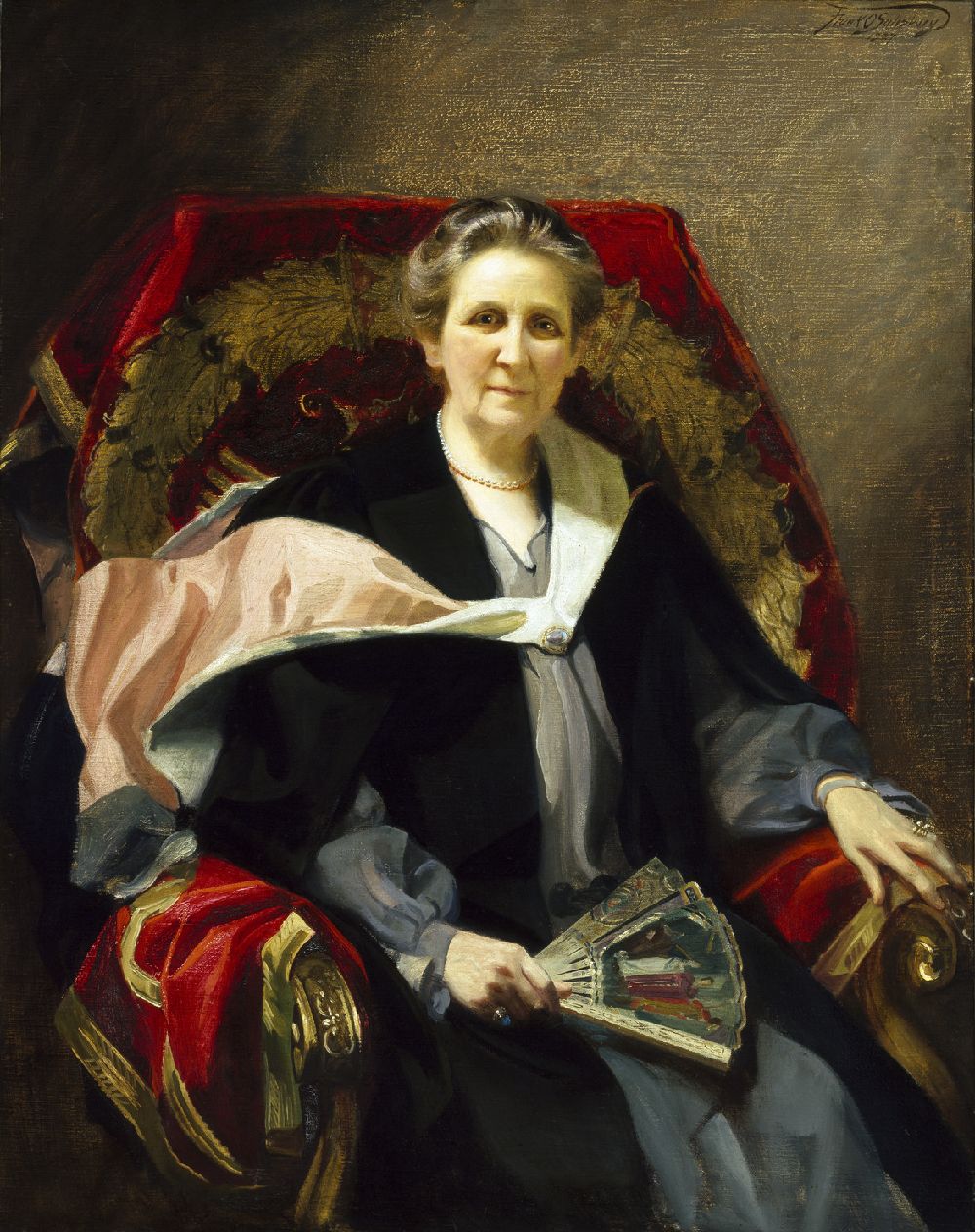1.4 History of the Manuscript
The manuscript prepared by Dering and his scribe in 1623 remained in the Dering family archives in Surrenden until 1844, when it came to attention of local historian Rev. Lambert B. Larking, vicar of Ryarsh in Kent. Larking visited Sir Edward Dering (1807-96) to study his archives in pursuit of his history of Kent, and found the manuscript in one of the chests in the Dering muniment room. With Dering’s agreement, Larking placed the manuscript in the hands of the Shakespeare Society. James Orchard Halliwell, a leading member of the Society, prepared his edition from it for the Society’s publications of 1845.1

Halliwell purchased the manuscript himself, perhaps soon after he had worked on it for his edition.2 He passed it on to George Guy Greville, Earl of Warwick, “presumably during the 1860’s when he was assisting the Earl in assembling his collection at Warwick Castle.”3

mezzotint, published 1 October 1839, NPG D37870. © National Portrait Gallery, London
After the Earl’s death in 1897 his library was dispersed, the manuscript being purchased by Henry Clay Folger, to become part of the Folger Shakespeare Library collection, originally owned and developed by Henry Clay and Emily Jordan Folger, and now housed in the Library in Washington, D.C.


Halliwell describes the manuscript as “slightly stitched and unbound,”4 and mentions three fly leaves, of which only one survives. One of the lost leaves was marked “A 5”, perhaps Dering’s pressmark. The manuscript was bound in the nineteenth century for Halliwell or the Earl of Warwick; Williams and Evans identify Charles Lewis as the binder, but Lewis died in 1836, well before the manuscript had come to light. The earlier binding, which Williams and Evans describe as “nineteenth-century morocco, gilt-stamped around the edges,” is stored separately in the Folger’s vault.5 According to Yeandle6 the slip was mounted into a hole cut in the blank leaf identified as fol. * by the binder. The binding remained in place at least until 1974 when the George Walton Williams and Gwynne Blakemore Evans’s landmark Folger edition was published. Williams and Evans presented black and white images of each page opposite a transcript, with textual notes at the foot of the page, and a fuller “descriptive and historical collation” as an appendix. The manuscript had been disbound by the time Laetitia Yeandle and Peter W.M. Blayney examined it in 1986. Yeandle’s short article offered a ground-breaking analysis of the paper, demonstrating that part of the manuscript had been copied twice by the scribe Carington.
PREVIOUS: Read about the manuscript’s physical characteristics.
NEXT: Learn about Dering’s vast collection of books and plays.
